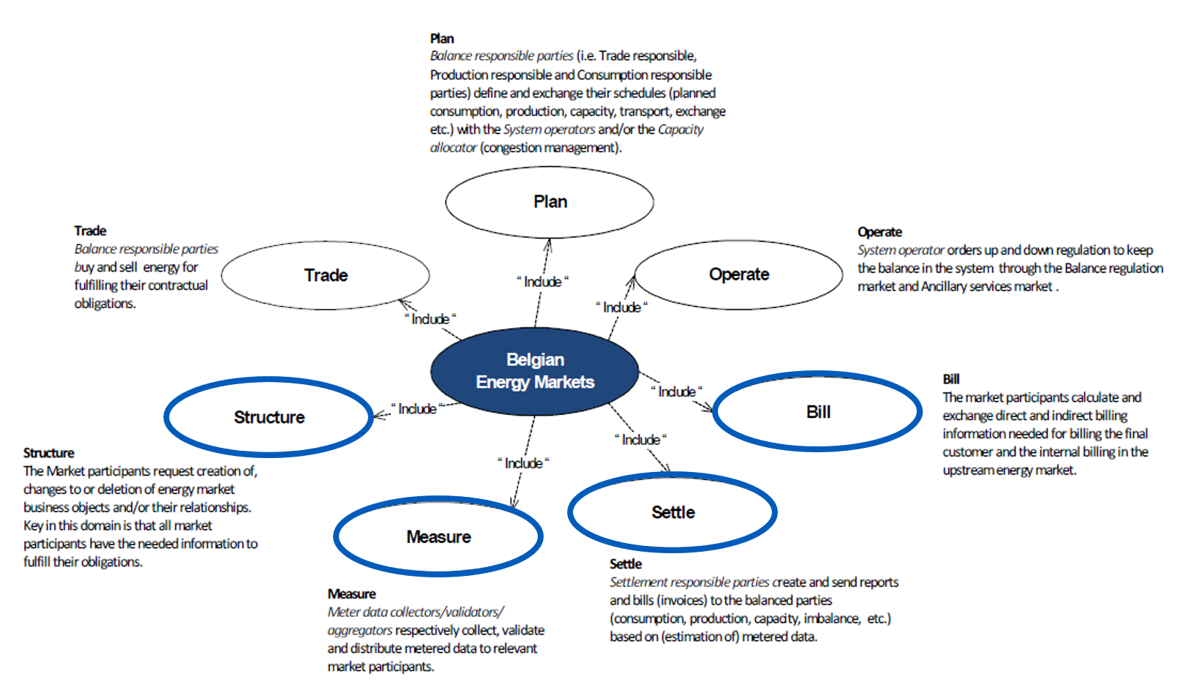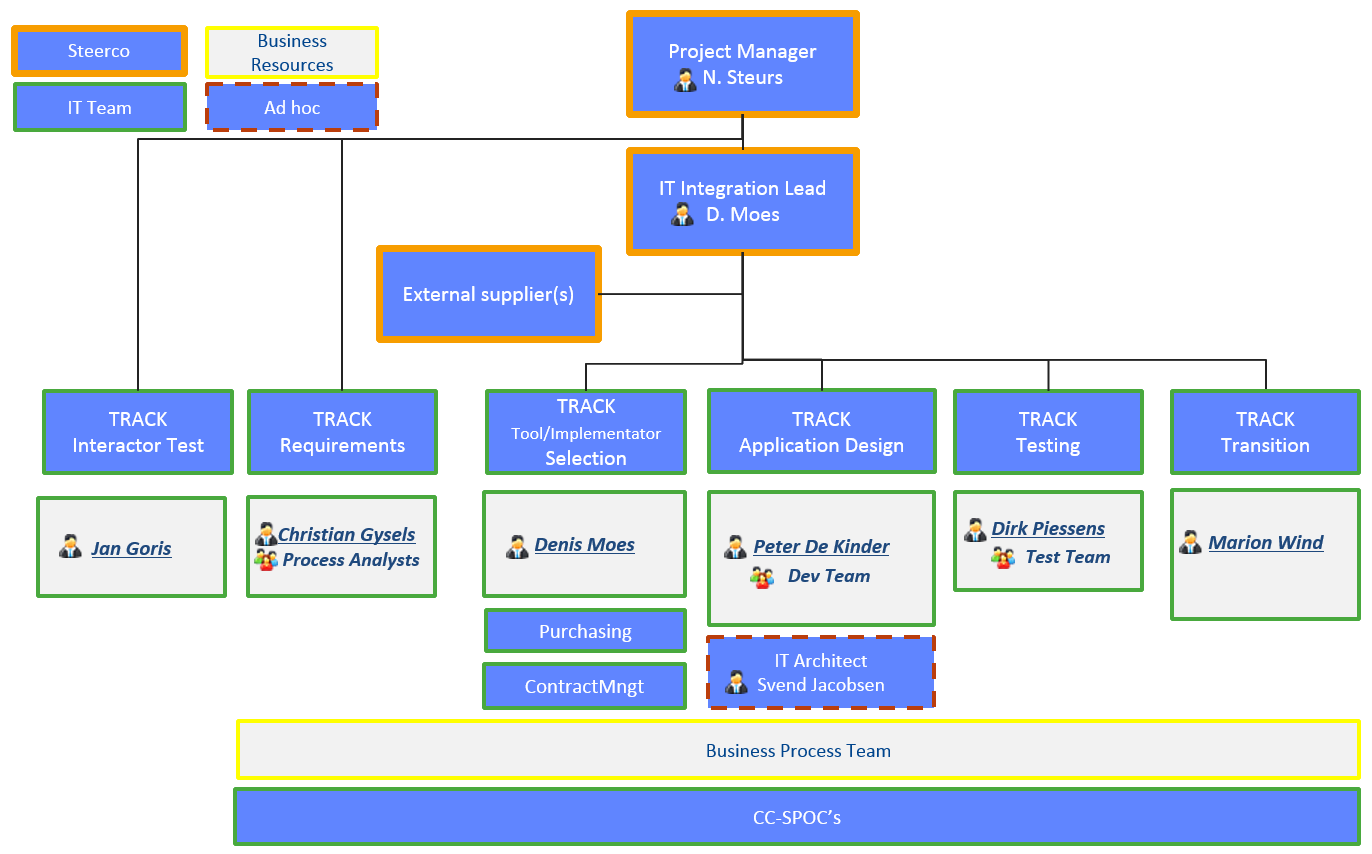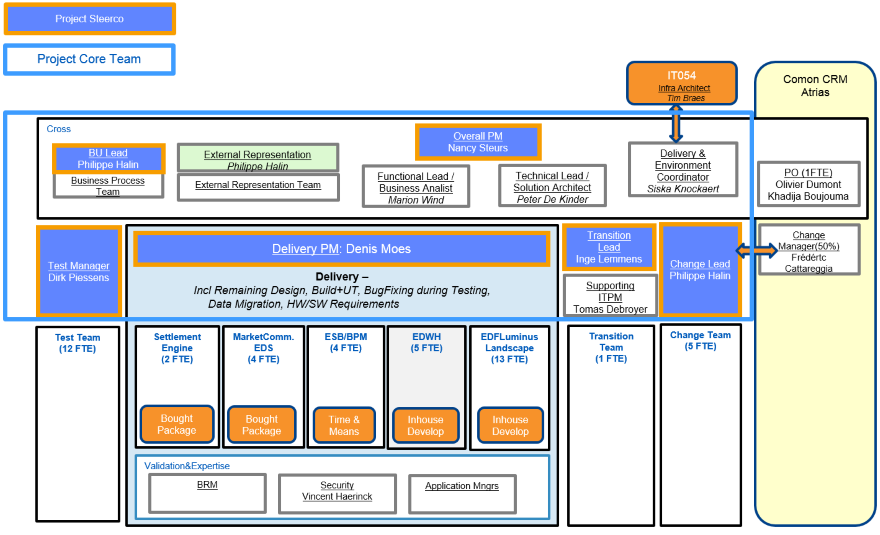EDF Luminus - Atrias ProjectMay 2015 till December 2017Content: |
 |
Management Summary
Development of the integration solution between the ATRIAS clearing house for the Belgian Utilities Market and EDF Luminus, an energy supplier. The solution needs to align the different processes within the company to the new communication channels provided by ATRIAS, as well as the new MIG6 standard. The largest impact will be on the scope of the Market Communication Department (which was decommissionned in 2015). The different impacted domains from the MIG6 standard are circled in blue in the illustration below.

Team Composition
Since the Atrias project has such a long duration, it is split up in stages each with a specific focus. Stage 1 was the shaping of the project, consisting of formalizing the requirements and determining an overall architecture. Stage 2 consists of fleshing out the architectural principles of the first stage into a structured design and elaborating the requirements into functional designs. In stage, the technical design and development is executed. My involvement in the project started from stage 2 onwards.
A general overview of the project team structure in stage 2 can be seen in the organigram as depicted below. The boundaries of my responsabilities within this team are situated in the Application Design Track. These responsabilities cover keeping the different analysis efforts (both functional and technical) in line with the overall architectural principles of EDF Luminus, as well as the solution architecture as described by me. This includes designing the approach for the governance and operational support after the go live of the solution. I also serve as a source of information on architecture and best practices for the other tracks when they require it. Finally, in this stage, the different RFP's are launched and awarded to external parties.

Stage 3 of the project ramps up development, and here my tasks shift to assuring the overall technical alignment between the different delivery tracks, and assuring the quality of the delivered artefacts (both designs and source codes). When technical choices are still needed, I take the role of moderator and final decider in discussions between the different technical teams.

Related Topics
While reading the book "Passports to Success in BPM", one of the customer cases handled was that of Vitens, the largest water
company in the Netherlands. This case struck me as a project very similar to this one. The same problems were encountered, almost an identical technology stack was utilized, and the sector was comparable
to the energy utilities market. Although their BPM initiative is further along in BPM maturity, some lessons could be transferred to this project.
Similar Pitfalls:
• Should verify the business is committed to the project (which is labeled co-creation at EDF Luminus)
• Keep an eye on the goals, and not let the BPM become a goal in itself
• Keep up a maximum level of communication with all stakeholders
• Keep performance in mind (stability of the infrastructure and middleware, sizing/scalability of web services)
| Project | BPM | SOA | CRM | ERP | Utilities Sector |


